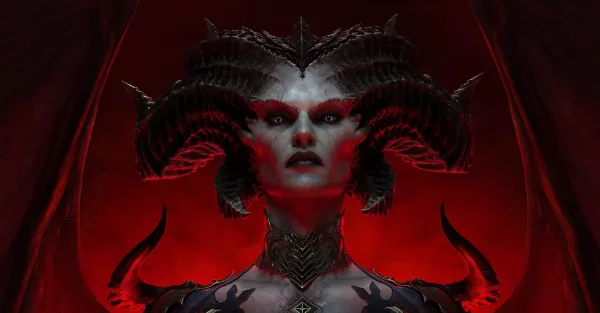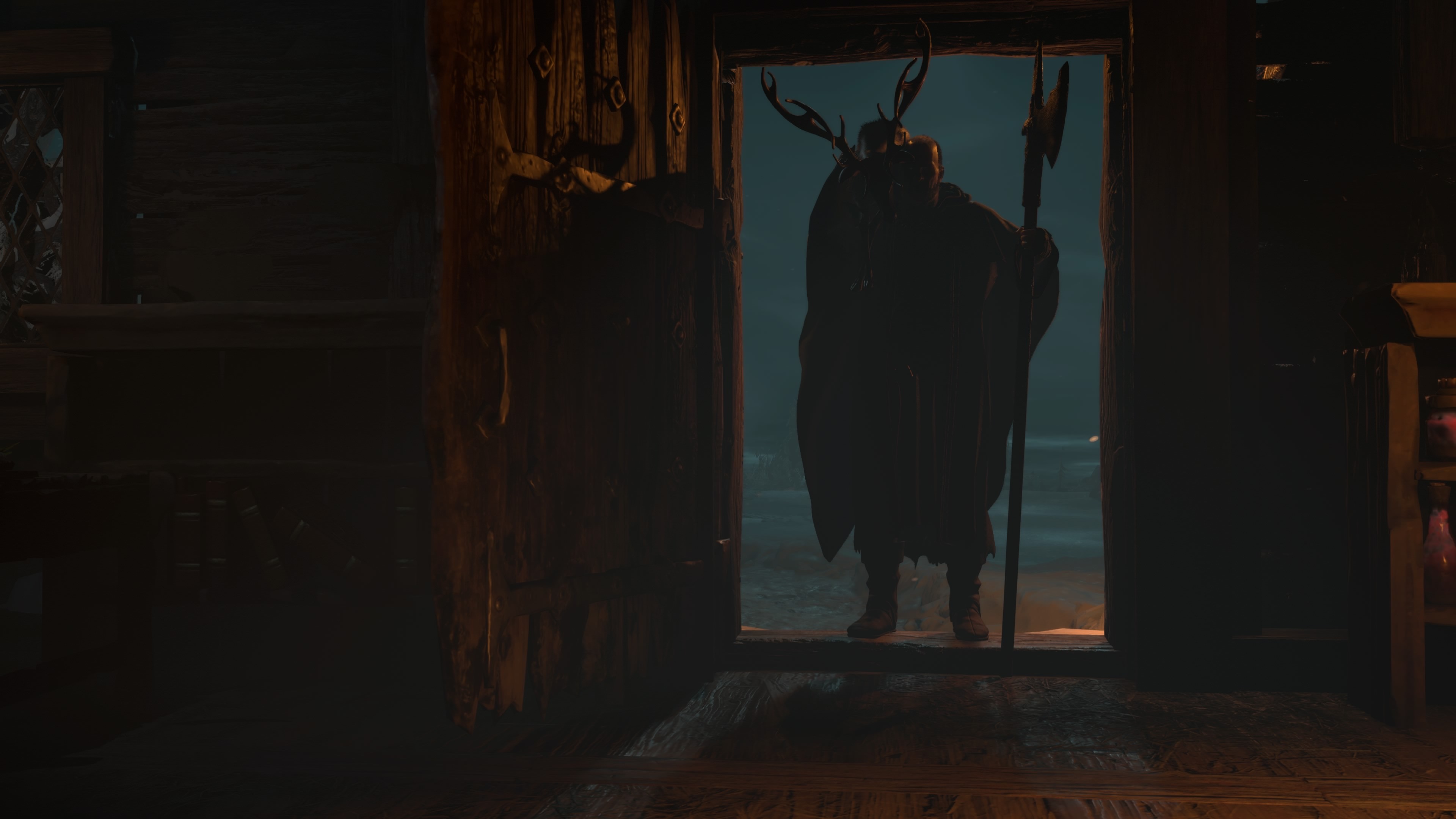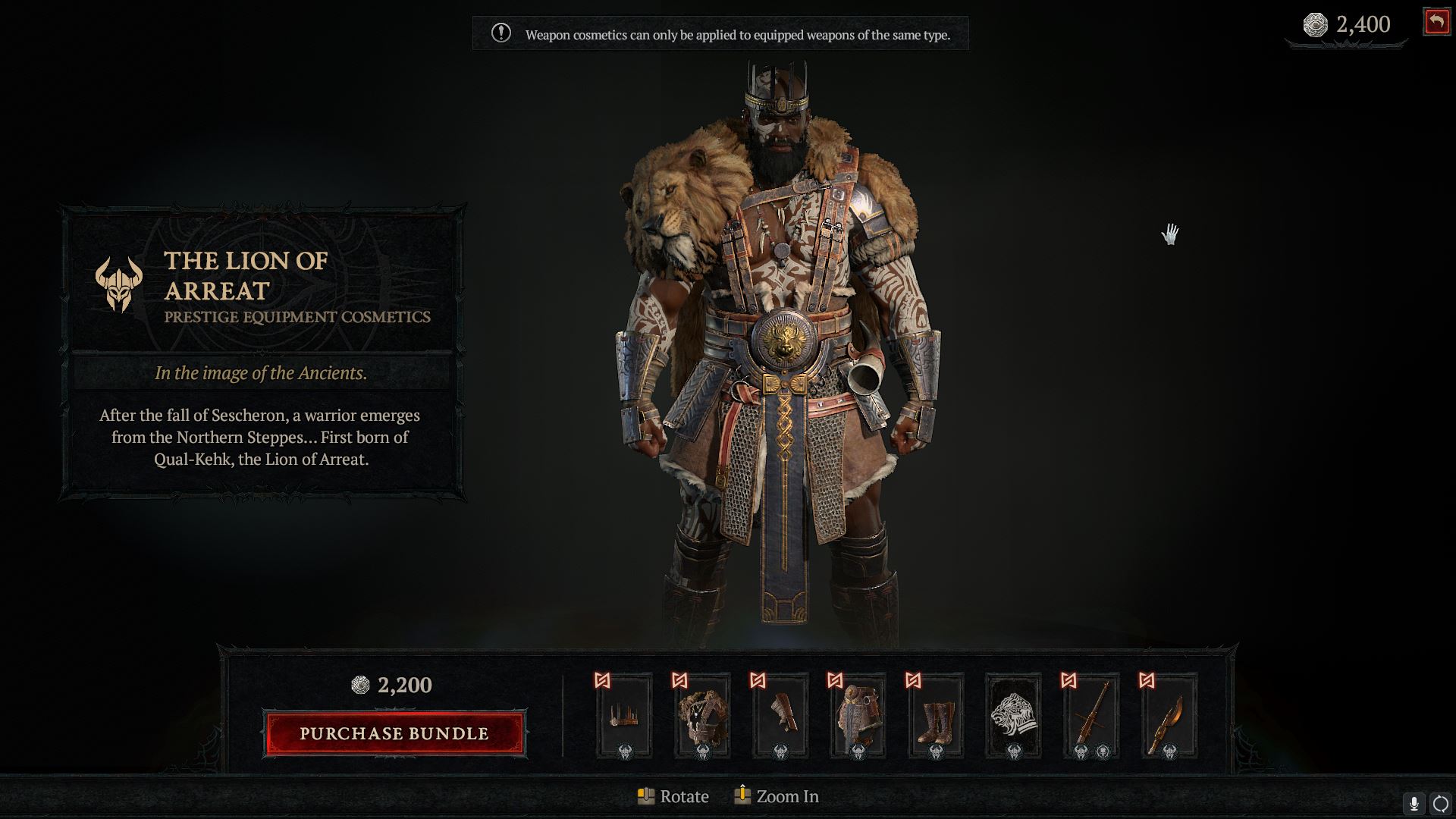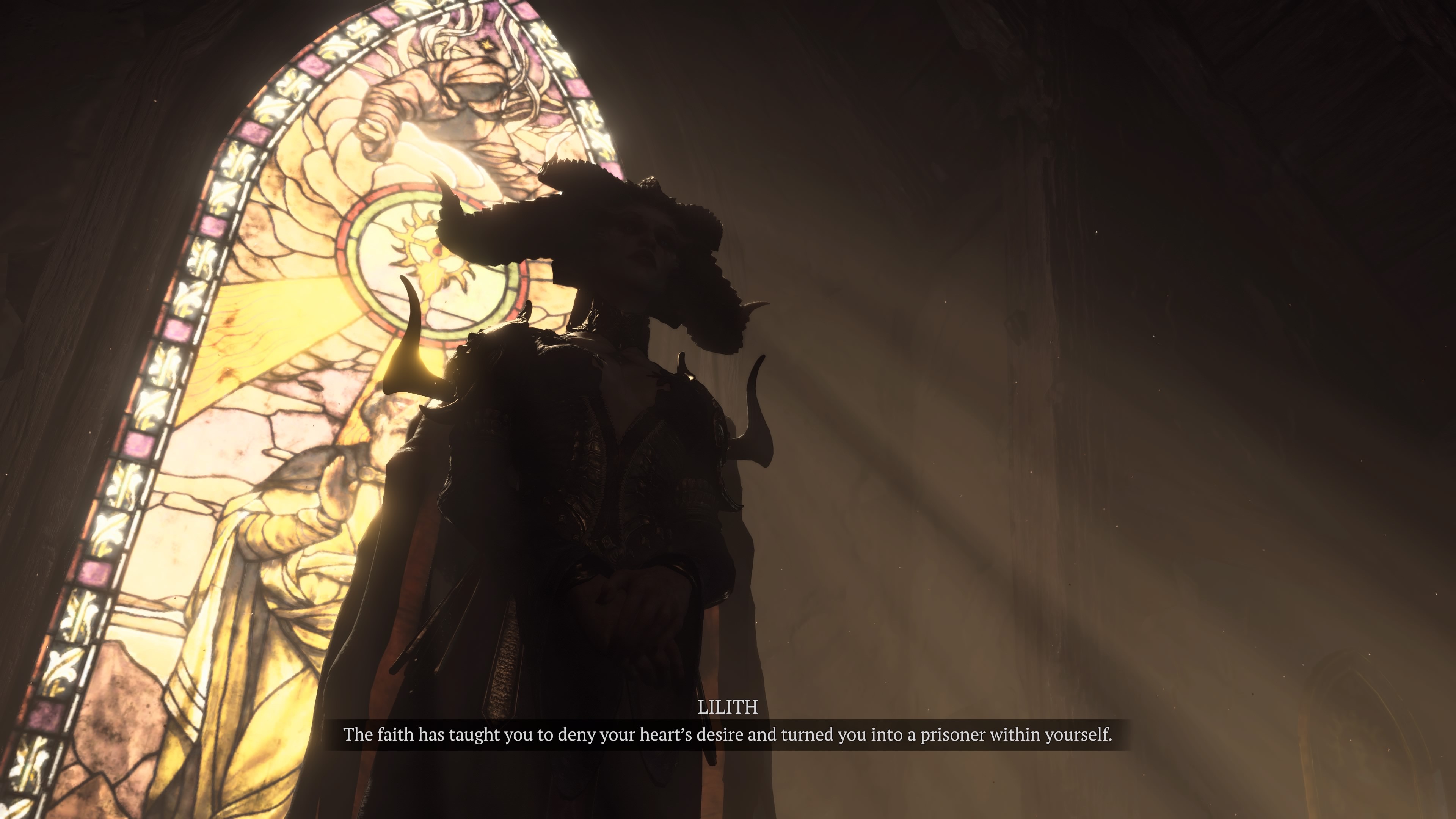Diablo 4 Review | Ungodly Addicting
With what Diablo 4 lacks in innovation, it makes up for it with its refinement of what came before in previous Diablo games.

In the darkest corners of Sanctuary, where ancient evils stir and malevolent forces thrive, a sinister crescendo awaits. Diablo 4 emerges from the abyss, beckoning players into a twisted realm of chaos, bloodshed, and temptation. With its chilling atmosphere, in-depth progression systems, and much-improved storytelling, this long-awaited installment in the revered Diablo franchise promises to plunge players into a harrowing journey that you just can’t put down.
Brace yourself, for Diablo 4 stands poised to cast an unholy spell upon both veterans and newcomers alike, giving an experience that will leave souls trembling, hearts racing, and sleep schedules gasping for air.
Slay Queen
Immediately in the first few minutes, Diablo 4 sets itself up to mean some serious business. A gripping introduction to the main baddie, Lilith, the daughter of Hatred, positions her as a villain that’s instantly more memorable than Diablo ever was in the 3rd game.
In just a little less than 8 minutes, the intro cinematic communicates what to expect with Diablo 4: a darker tone from both a visual perspective and one that is also backed up by writing that has more gravitas to it. There are lines here that are ingrained in my mind as I slash through hordes of demons. The chant that calls upon Lilith herself to come to Sanctuary echoes through my memory that’s almost hypnotic in nature. Even as simple as “Blood is the key” carries so much weight to further paint a harrowing picture of just how far Sanctuary has fallen since we last visited it. Throughout the game, there is an overall sense of dread for what’s to come which made the entire experience all the more engaging.
If you’re just trying to finish the main campaign without concerning yourself much with the side activities, you can roll credits at Diablo 4 in just about 20 hours. But, if you’re someone like me who took his time to really explore what the game had to offer to the point that I ended Act 1 as a level 32, then this can easily provide hundreds of hours before you even reach the endgame.
The story is better not because of its scale but in its depth. The narrative is dense, intense, and emotionally grounded. You feel the despair and desperation the people of Sanctuary have. Lilith excels at manipulation. She forms genuine connections with particular individuals you meet in the story and even to a certain extent, your own character as well. I even had moments during her dialogues where I started thinking to myself “Wait, she might have a point.” which is equally terrifying and impressive. Props to the writers for Diablo 4. Seriously. Usually, the narrative of a Diablo game is really just an excuse for you to run around and kill demons but this is the first time I’ll actually recommend paying attention.
It’s riveting to see it all unfold. A major component that drives the conflict is the idea that explores the ugly side of humanity. What if the morals that make us ethical beings are just a suppressant that hides away our true sinful selves? What does the world look like if we act upon our primal instincts? What is it to be “beautiful in sin”? Are concepts like religion and governing bodies hindering us for personal satisfaction rather than for the collective betterment of society? Those are the types of conversations Diablo 4 has and it is disturbing, chilling, and absolutely fantastic.
However, while it does have a very good start with Act 1, the game does struggle a little bit to continue its momentum moving forward. Diablo 4 continues with the odd trend of AAA games wherein they try to reduce the presence of the main villain. Yes, you do still feel the stakes and Lilith’s effect on the world but I just wish she had more screen time. Act 5 in particular is about as filler of an episode as you can get. Luckily, Act 6 does pick it up and for the most part, ends on a relatively good note. Until the inevitable expansions.
The final cherry on top that really pushes the narrative experience of Diablo 4 is its excellent visual presentation. The game has a hauntingly gorgeous art style that is a bit more realistic in tone but never loses the dark fantasy vibe that just fits in so well in a Diablo game. Diablo 4 further expands on the tonal motif of Diablo 2 where the atmosphere was king. Detailed textures, emotive facial expressions, and stunning lighting effects really come together to present the best-looking ARPG on the market.
Also, be sure to put your best headset to use or crank up the volume of your speakers because Diablo 4 is an auditory treat. From the bleak ambiance of the environments, the loud sound of weapons clashing, spell casting, and monsters screaming, there are just a few things in the industry that compare to the quality you’ll hear here.
We already know what Blizzard brings to the table in terms of pre-rendered cinematics, and there are a few here that are in the running for the studio’s best work of all time, but Diablo 4 takes it up a notch with its in-game cutscenes as well. Key conversations in the narrative will trigger an in-engine cutscene that features a dynamic camera rather than sticking to the static ARPG perspective previous games have used. Your character is also shown in these cutscenes which really adds so much to the sense that you are an active part of this story rather than a bystander at the side. All of this just adds to the immersion factor. Seeing your character, front and center, participating in key moments of the game is a subtle yet powerful change that elevates the entire experience.
Demonic grasp
What makes a Diablo game truly captivating is its addictive gameplay systems that keep you hooked long after the story ends. Diablo 4 takes this essence and elevates it to new heights, offering an irresistible blend of intense combat, character growth, and rewarding loot. Right from the moment you pick up your first weapon, every swing and hit feels incredibly satisfying.
With a wide range of skills to choose from, you can customize your character’s abilities to suit your playstyle, while the vast collection of increasingly powerful gear entices you to explore every dark corner of the world. Diablo 4 knows how to keep you engaged and wanting more, even after hours of gameplay. Its addictive nature will lure you back time and again, urging you to embark on another quest, go for one more dungeon, or try to explore that one dark corner of your map.
There’s an impressive amount of variety in terms of choosing which class you go for. The barbarian has an arsenal system that allows it to wield multiple weapons at once. A sorcerer is able to equip certain spells as passive abilities. Necromancers have the ability to customize how they summon their undead minions or trade them off for passives. Druids can perform spirit offerings that give them powerful buffs. And last but definitely not least, a rogue can gain combo points that will continually offer benefits based on your build.
That’s just the very tip of the iceberg in terms of how you can play around with each class. There are expansive skill trees for each one where you can choose your own abilities, and what special attributes they can have, and once you go beyond level 50, fall deeper into the rabbit hole of the paragon system — which eventually gives you legendary nodes that provide massive buffs to play around with.
Should you want to have a complete redo of your build or decided that you don’t want a particular skill anymore, you can easily refund your spent skill points and dedicate them towards something else. The price does increase the more you level up but it’s nothing too significant.
There are insane levels of build diversity that can be found in Diablo 4. Experimenting with the various unique loot and how they work with your chosen skills is a large part of the experience. I choose to go for a sorcerer for my first run wherein I have a basic lightning attack that has a chance to stun enemies, various fire-based abilities to perform continuous damage over time, and an ice-based AOE attack that slows and freezes a particular area. I didn’t go for a defensive skill anymore since I found a legendary armor piece that creates a dome of invincibility around me as soon as I get hit with health below 80%. That was just in the first Act. There are even crazier synergies you can make as you progress and find more loot.
What makes Diablo 4’s grind so enticing is that in nearly everything you do, you’re working towards something substantial. There are a number of progression systems here that are account-wide. There are 6 major regions in the game with 5 renown levels each. Completing different activities in a given region such as dungeons, side quests, discovering new areas, unlocking new waypoints, etc. counts towards increasing your renown. These give you large amounts of bonus XP and unique rewards such as more potion capacity, extra skills points, obols, etc. The Altars of Lilith are small shrines you find scattered around the regions where if activated, gives your account a permanent buff that carries over to all of your characters.
And most definitely my favorite feature is how after going through the main campaign with your first character, you can easily skip to the endgame if ever you were to make another class again. In a type of game like this where the pinnacle of the experience lies in a robust endgame system, the small crawl to reach that has always been a massive turn-off even for the most dedicated players.
Speaking from someone who plays Destiny 2 a lot, having to repeat content multiple times per character just so I can participate in the more interesting stuff is something that get increasingly demotivating. Diablo 4’s account-wide progression system is what happens when a game constantly rewards your grind while at the same time, respecting the time you put into it. It doesn’t demand that you fully dedicate everything to it, you’ll be motivated to do it yourself because of how rewarding it can feel. You’re always inching towards something interesting that you know will have wider implications in the long run.
The devil is in the details
Unfortunately, as much as I’m making it sound to be so far, Diablo 4 isn’t a perfect game. A lot of its issues stem from the decision that this game will be an always online experience.
You’ll see random players just zooming past or joining you in your travels beyond the social hub areas in each region. It seems like Blizzard is trying to position Diablo as a soft MMO ARPG experience which is admittedly, very cool and for the most part, works the way it’s intended to. It’s fun running into a random event in the world and helping out a struggling player and vice versa.
However, this also means that the procedurally generated world system does not exist anymore aside from the 120 dungeons. The map is massive but it is just one layout for everyone else. In a way, this works because you get a much more concrete grasp of what the world is like. You feel like this is an existing place that you are fighting to save. Not a randomized playground filled with loot. It gives Blizzard much more real estate to tightly design loot placement, activities, etc.
The problem lies in the dungeons. These are substantial areas scattered around the map that can take you up to 30 minutes to an hour to go through. The endgame content also relies heavily on these as you go through them again with a much harder difficulty in exchange for better loot. While their geographies are randomized, they all follow the same similar structure. Go through a semi-linear corridor, and stumble upon a locked door/ area where you have to collect something to open it up for the boss fights at the end. That’s really it. It does become a bit tedious in the latter part of the experience.
There’s also no way of knowing if the dungeon you’re about to do is connected to a side quest. For example, I just spent about an hour going through one because I wanted to get the aspect that’s rewarded after you completed it for the first time. I make my way to the nearest town to fix my inventory and I stumble upon a side quest that tells me that I have to look for something in the same dungeon. I had to go through it all over again.
This leads me to talk about side quests. The missions design isn’t particularly interesting. A lot of them are fetch quests, go to this area and kill this demon, find a missing person and once you do, they’re most likely dead so you just have to fight an elite enemy. While there are a few that have their own mini storylines to keep you hooked, at the end of the day, they give minimal rewards.
Diablo 4 also has a slight problem in terms of environmental diversity. The different spaces feel more like reskins rather than completely new regions. But the more pressing issue with each major is the insane amount of level scaling. usually, when you level up, you gradually feel more powerful to just plow through hordes of enemies. In Diablo 4, unless you are really on top of your build in the latter parts of your playthrough, you’ll feel like you’ve hit a brick wall in terms of your power. Enemies hit harder with much more health the same way you are. It becomes too much of an equal ground that removes a lot of the gratifying power fantasy ARPGs provide.
And yes, let’s not beat around the bush here. This being a Blizzard game, there is an in-game store where you can spend real money on. As of right now, they’re only selling cosmetics that do admittedly look cool but not to the point that I felt like I needed them. The gear you get in the base game already looks incredible. I’m just scared that later down the line, Blizzard might get carried away and put all the cool designs into this store. We’ve already had experiences like that in other Activision franchises so what’s stopping them from doing the same in one of their most successful game so far?
I will give them props for not shoving this in-game store down our faces. There are no pop-ups or reminders that explicitly point you toward it. I actually had to go out of my way to look for it on the menus. If you weren’t looking, you could’ve easily missed it or just stumble upon it on a random session. Again, this can change over time but as of the launch period, it’s pretty tame so far.
As seasonal content roles in with the battle passes and major expansions, Diablo 4’s business model can easily change. Some of you already know the mess that was Diablo Immortal. Here’s to hoping that Blizzard lets Diablo 4’s excellent core speak for itself and not get too greedy the same way they have been in the past.
Final Verdict – 9/10
Diablo 4 is one of the most complete AAA releases in recent memory. It has an incredible campaign with a dangerously addicting gameplay loop that is difficult to put down. The foundations that were placed in this launch build have so much more potential for further improvement later down the line.
As we anticipated the already confirmed 2 major expansions to come, I’m more than happy to continue sinking in hundreds more hours into Diablo 4. A powerful GOTY contender for 2023. The main motivation I had for finally finishing this review is having more time to jump back into Sanctuary. Lilith awaits, and I cannot recommend enough that you take the plunge yourself.
This review was made via a PS5 game code provided by the publisher.










